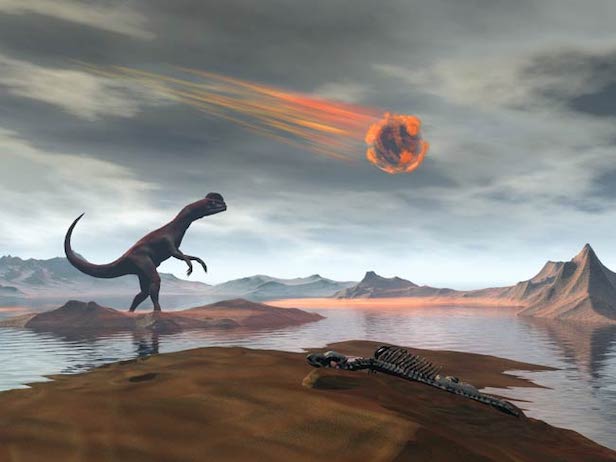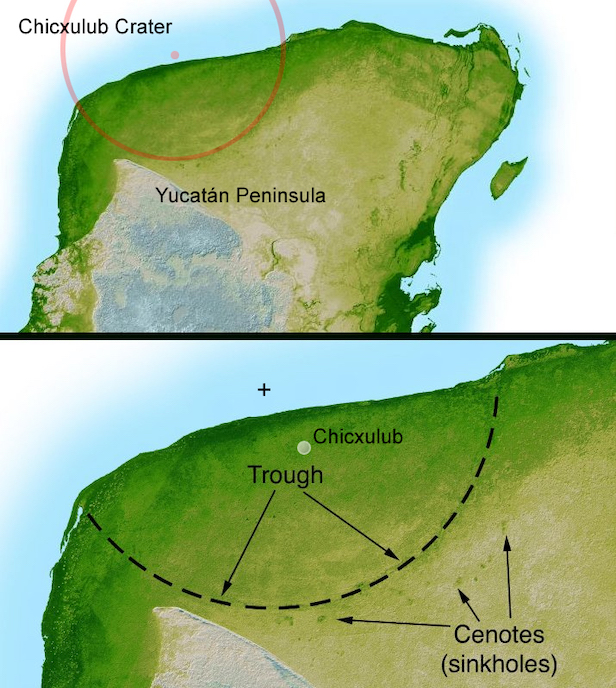It wasn’t just an asteroid that killed the dinosaurs, there was also a tsunami
This catastrophic event wiped out 76 percent of all life on Earth 66 million years ago

An artist rendering of a space rock streaking toward Earth. Most experts think an impact off the Yucatan Peninsula 65 million years ago was the primary cause of the dinosaur demise. Image credit: stockxpert
Curtin University researchers in Perth, Australia, who were part of a scientific expedition that retrieved core samples from a crater in the Gulf of Mexico have found evidence that the asteroid that caused the mass extinction of the dinosaurs also triggered a giant tsunami.
The research, published in the prestigious Proceedings of the National Academy of Sciences (PNAS) recently, was carried out by a scientific team that drilled deep beneath the Chicxulub crater, which was created 66 million years ago by the impact of a giant asteroid that was believed to have killed three-quarters of all life on Earth.
Lead Australian researcher John Curtin Distinguished Professor Kliti Grice, from the WA-Organic and Isotope Geochemistry Centre (WA-OIGC) in Curtin’s School of Earth and Planetary Sciences, says the team drilled into the crater in order to retrieve rocks from 500 metres (1,640 feet) to 1300 metres (4,300 feet) below the seafloor, finding evidence of the events of the days after impact.
“This research helps answer the tantalising question of exactly what happened in the immediate aftermath of one of the most significant events in Earth’s history,” says Professor Grice.
“The asteroid impact that formed the Chicxulub crater on the Yucatán Peninsula in Mexico, where this research was carried out, is thought to be the cause of the late Cretaceous Period mass extinction event which led to 76 per cent of all plant and animal species world-wide, including all non-flying dinosaurs, being killed off.

This shaded relief image of Mexico’s Yucatán Peninsula shows a subtle, but unmistakable, indication of the Chicxulub impact crater. Image credit: NASA/JPL-Caltech/David Fuchs
“The research team analysed samples of the peak ring of the Chicxulub crater core for molecules such as polycyclic aromatic hydrocarbons (PAHs), revealing that a tsunami measuring several hundred metres in height flooded the crater within days of the asteroid impact.”
Professor Grice says the tsunami carried debris containing the polycyclic aromatic hydrocarbon (PAH) perylene, which is derived from a pigment made by fungi that degrade wood.
“The abundance of perylene within the crater is the result of it being transported there by the soil and land plant debris carried by the tsunami,” Professor Grice says.
Professor Sean Gulick, from the University of Texas at Austin, is the lead author of the research and led the International Ocean Discovery Program expedition to the Chicxulub crater in 2016.
Keep up to date with the latest news in All About Space – available every month for just £4.99. Alternatively you can subscribe here for a fraction of the price!




